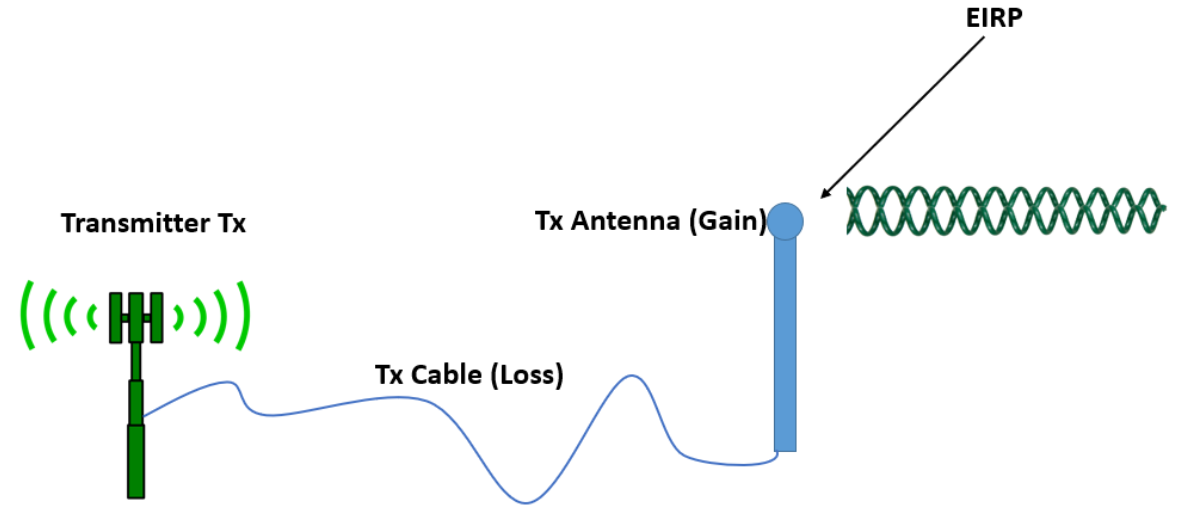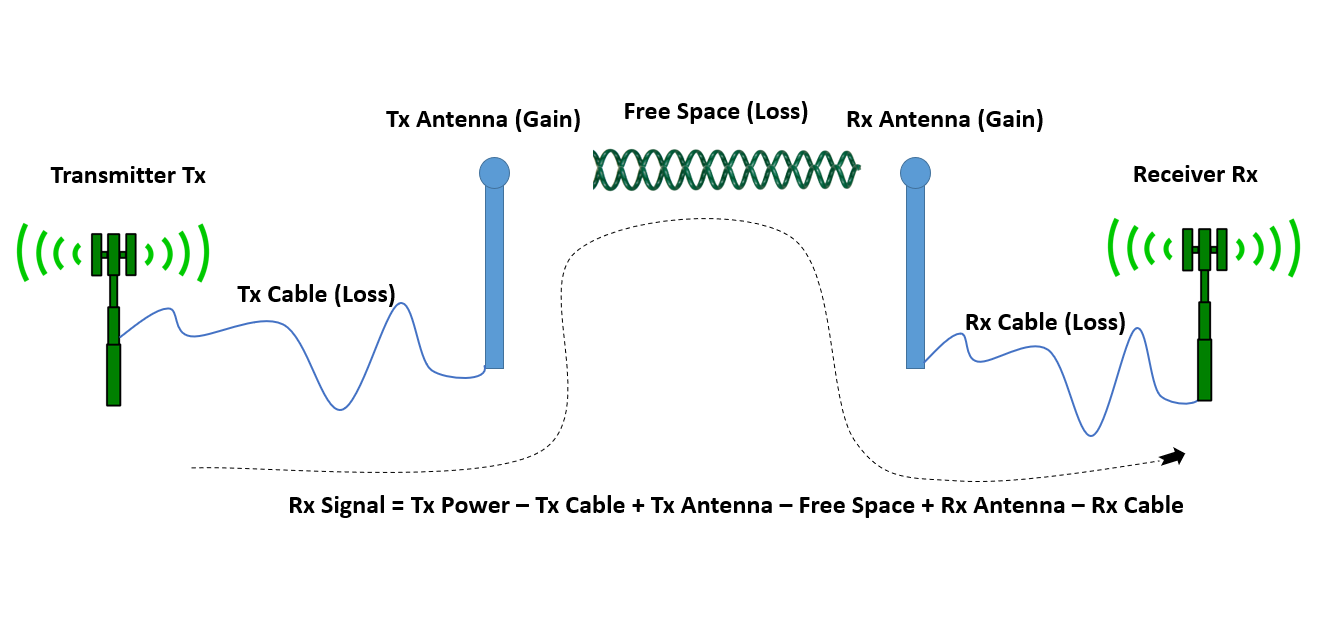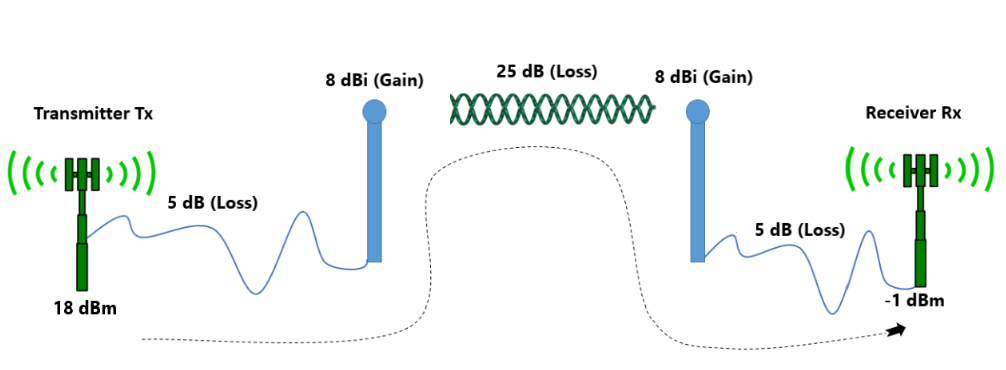Effective Isotropic Radiated Power or Equivalent Isotropic Radiated Power (EIRP) is the measured power radiated in a single direction by an ideal isotropic antenna. It is the antenna’s maximum power output in the direction with the highest antenna gain.
EIRP must take into account the connector-related power loss as well as transmission line losses. The exact radiated output power from the transmitting antenna can be calculated using the transmitter power level, cable length, and antenna gain. In most countries, EIRP is controlled by government bodies. Therefore, a system is not permitted to emit signals above a specified EIRP.
EIRP Calculation
As shown in the image below, a system’s EIRP can be calculated by adding the transmitter power level to the antenna gain and then deducting the cable loss.
EIRP = Tx Power + Tx Antenna – Tx Cable

If a transmitter has an input power level of 12 dBm and is connected to an antenna with a 10 dBi gain using a cable with a 4 dB loss, then the EIRP of the system is 18 dBm.
EIRP = Tx Power + Tx Antenna – Tx Cable
EIRP = 12 dBm + 10 dBi – 4 dB
EIRP = 18 dDm
If a dipole antenna is used as the reference antenna, its antenna gain is in dB-dipole (dBd). It has a gain of 2.14 dBi. So to convert the dBd unit to dBi, add 2.14 to the dBd value.
dBi = dBd + 2.14
EIRP Link Budget
The link budget takes the complete signal path into account. It ensures that the transmitted signal has enough power to reach the receiver. Gain and loss dB values can be added at various points along a signal’s path. The image below portrays the signal gain or loss components along the path from the transmitter to the receiver.

The example below shows some dB values and the resulting sum of the components across the signal path. Add the gain and subtract the loss components to calculate the received signal strength over the path.
Rx Signal = Tx Power – Tx Cable + Tx Antenna – Free Space + Rx Antenna – Rx Cable
Rx Signal = 18 dBm – 5 dB + 8 dBi – 25 dB + 8 dBi – 5 dB
Rx Signal = -1 dBm

Starting with the transmitter power, just add and subtract the dB components along the signal path to determine the signal power that reaches the receiver.
Download our Free CCNA Study Guide PDF for complete notes on all the CCNA 200-301 exam topics in one book.
We recommend the Cisco CCNA Gold Bootcamp as your main CCNA training course. It’s the highest rated Cisco course online with an average rating of 4.8 from over 30,000 public reviews and is the gold standard in CCNA training:
